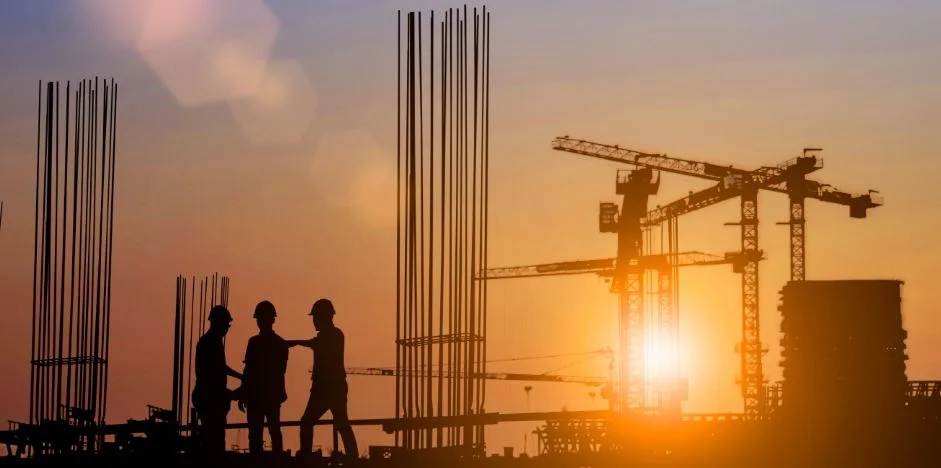In many countries around the world, the construction industry forms a vital part of the wider economy. For example, in America, construction typically represents around 4% of the country’s total GDP and employs millions of people. Construction is a key part of the wider economy as it helps cities and residential areas to grow and develop. It is also important to ensure that road networks and utilities remain in perfect condition and can support the needs of local populations. Today, the construction industry is comprised of many thousands of small firms and some larger enterprises.
Regardless of their size or scope of operations, all construction firms must remain competitive. In an era where material and energy costs are rising, construction firms must ensure that they operate at the highest levels of efficiency so they can continue to make suitable profits that will fund further growth. In this article, there will be an in-depth discussion of how construction firms remain competitive in 2024. Some key examples will be used to support this, including how operating safely can help a firm remain competitive and the need for construction firms to invest in project management solutions.
Using efficient machinery and equipment
Few industries rely on heavy machinery and equipment as the construction sector. Daily, construction firms will use a wide range of equipment that is designed to move heavy goods or undertake construction projects effectively. This equipment reduces the need for a large team of unskilled laborers, thereby keeping staffing costs low and allowing firms to remain competitive. For example, construction firms may use mechanical diggers to prepare foundation works, shifting huge volumes of soil and ground materials at speed, with one worker controlling the vehicle. For industrial demolition projects, construction firms often need to precisely cut concrete and metal.
The use of diamond wire sawing techniques is key here, and firms such as Bluegrassbit.com are experts in this area of demolition. Their industrial cutting equipment allows structures to be cut extremely accurately, without vibration occurring or damage to any surrounding structures. Such firms can lease the equipment to construction companies or work with them on projects. Access to such specialist equipment ensures project work can be completed within strict timescales and budgets. In short, all construction firms rely on a range of heavy machinery and equipment to ensure that they can complete large-scale projects effectively without relying purely on human labor.
Project planning applications
In any construction project, there is a need for effective planning to take place. Accurate timescales need to be drawn up for each stage of the operations and costing needs to be allocated to each process. With a comprehensive project plan, firms can ensure that they are working to realistic budgets and timescales. Running over budget on a construction project can affect a firm’s profitability and its business reputation. Consistently running over budget or timescales on multiple projects could even hinder the firm’s ability to win future contracts, damaging its long-term future.
Thankfully, in 2024, there is a wide range of project management platforms that are specifically designed for the construction sector. These applications allow construction managers to plan each stage of a project, adding in costing, staffing, and documentation information. The system can send managers alerts when stages of production encounter problems or are in danger of breaching timescales. In short, project management platforms can be a key way to ensure that construction projects stick to both budgets and time limits.
Efficient operations with a focus on safety
Every construction site will have a range of potential hazards and dangers. Staff may need to work at height, presenting a risk of injury if they were to fall. In addition, some construction equipment is potentially dangerous in operation and can create risks for the staff who use them or those who are working nearby. The construction industry is noted for being a dangerous place to work. Recent statistics evidence this as it is estimated that there are 9.6 fatalities for every 100,000 full-time workers. This makes the construction industry the most dangerous sector of the wider working economy.
Construction firms that do not have a culture of on-site safety may be at a greater risk of experiencing accidents and injuries. This can result in delays to the construction project (especially if a fatality occurs on-site and a full investigation is needed), compensation claims being lodged, and a demoralized workforce. In short, all construction firms should consider staff and site safety in all their operations. Workers should be issued with suitable safety gear depending on their roles. For example, hard hats should be mandatory when working at height or in the vicinity of operations where debris or equipment could fall from height.
In addition, all staff should receive comprehensive health and safety training as part of the onboarding process. They should be encouraged to report all accidents or near misses to the designated safety staff of management. Ideally, the construction firm will keep electronic records of all these incidents to gain a comprehensive picture of site safety. This information also allows managers to take steps to identify risks that continue to affect the firm and take remedial actions to limit the likelihood of re-occurrence.





